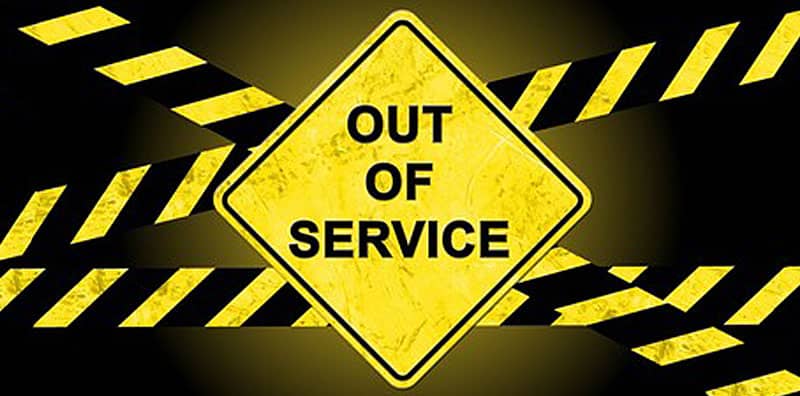How to Prevent Machine Breakdown
Machine breakdowns can wreak havoc on production lines and harden your bottom line. How do you prevent such costly interruptions? In this article, we’ll outline ten crucial tips on preventing machine breakdown and ensuring your manufacturing equipment stays operational and efficient. From establishing maintenance schedules to enhancing operator training, these insights will help you proactively safeguard against breakdowns without any fluff.
Key Takeaways
- Machine breakdowns in manufacturing, stemming from various causes such as wear and tear, improper operation, and design flaws, have significant financial and safety implications. They necessitate a deeper understanding to implement preventive strategies effectively.
- Proactive maintenance, including regular inspections and monitoring, developing a comprehensive maintenance schedule, and utilising technology like thyristor power controllers, is essential to enhance machine performance, reduce downtime, and extend component lifespans.
- Proper operator training and the establishment of a reliability culture within organisations are critical for the safe and efficient operation of machinery. Ongoing education and support for operators and maintenance teams are necessary to adapt to technology and regulatory changes.
Understanding Machine Breakdown
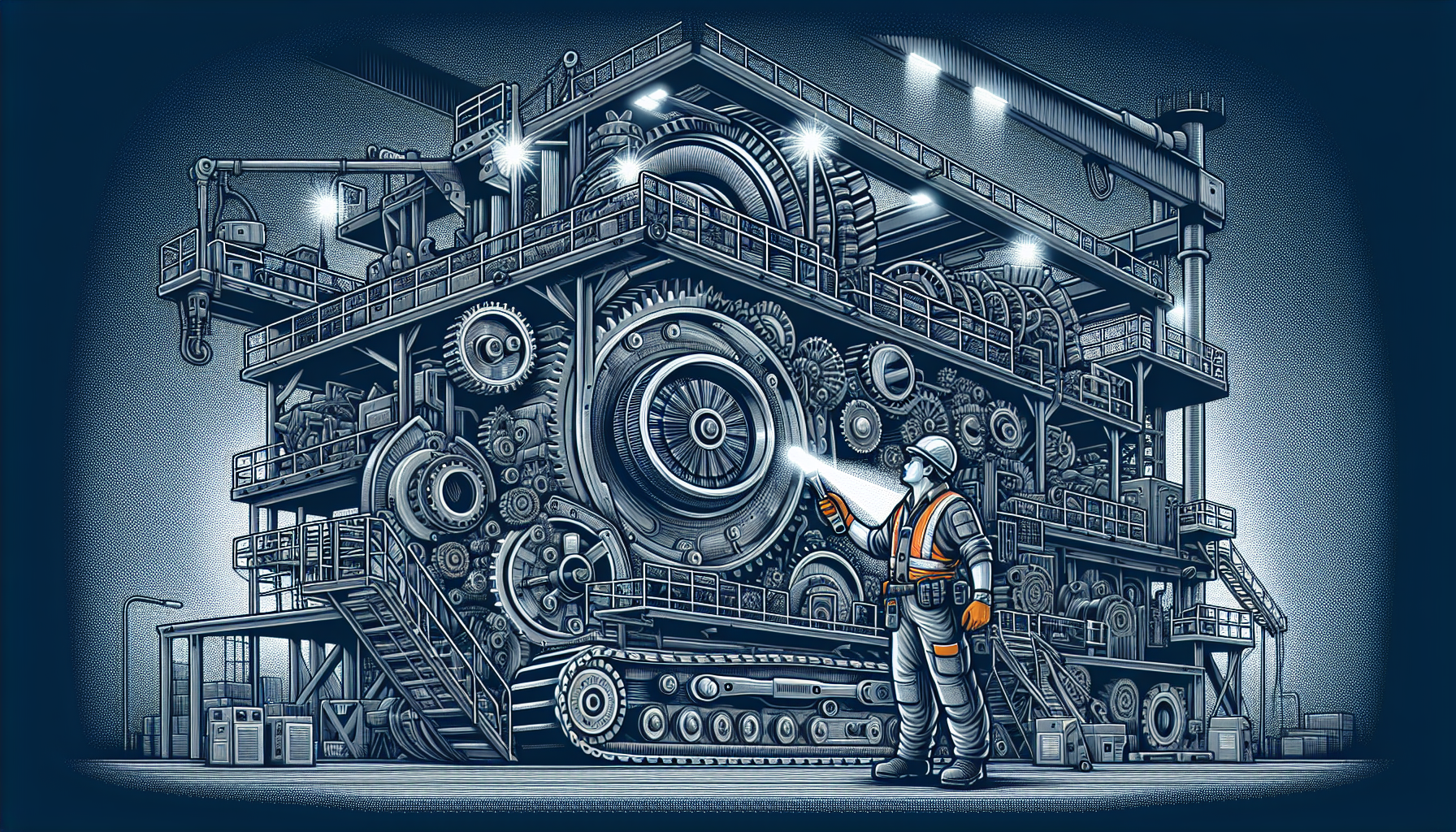
Understanding the intricate details of machine breakdowns is akin to diagnosing an ailment before prescribing a remedy. These equipment failures can be as varied as the machines themselves, stemming from wear and tear, operator errors, design flaws, or even electrical mishaps like short circuits. The repercussions of such breakdowns ripple through the manufacturing landscape, manifesting as cost losses, safety hazards, and bottlenecks that can tarnish a company’s reputation.
Understanding the causes of machine downtime, often linked to inspection frequency and maintenance schedules, is critical in mitigating and preventing machine breakdown.
Types of Machine Breakdown
Downtime in manufacturing is a two-faced beast: planned and unplanned. The former is the necessary evil of scheduled maintenance, where machinery is paused for inspections and part replacements. However, the latter, the unplanned machine downtime, strikes like a sudden storm, disrupting the manufacturing process without warning.
Unscheduled downtime, a significant productivity disruptor, is a main area of focus in efforts to reduce downtime, including reducing unplanned downtime and preventing machine breakdown.
The Cost of Machine Breakdown
Machine breakdowns bear costs that go beyond immediate repair expenses and lost production. It’s an iceberg with much of its mass hidden beneath the surface, including the diminished satisfaction of your customers and the lost opportunities for innovation due to diverted resources. Recognising the multifaceted nature of these costs is essential in convincing upper management to invest in strategies aimed at reducing costly downtime events.
1. Implementing Preventative Maintenance
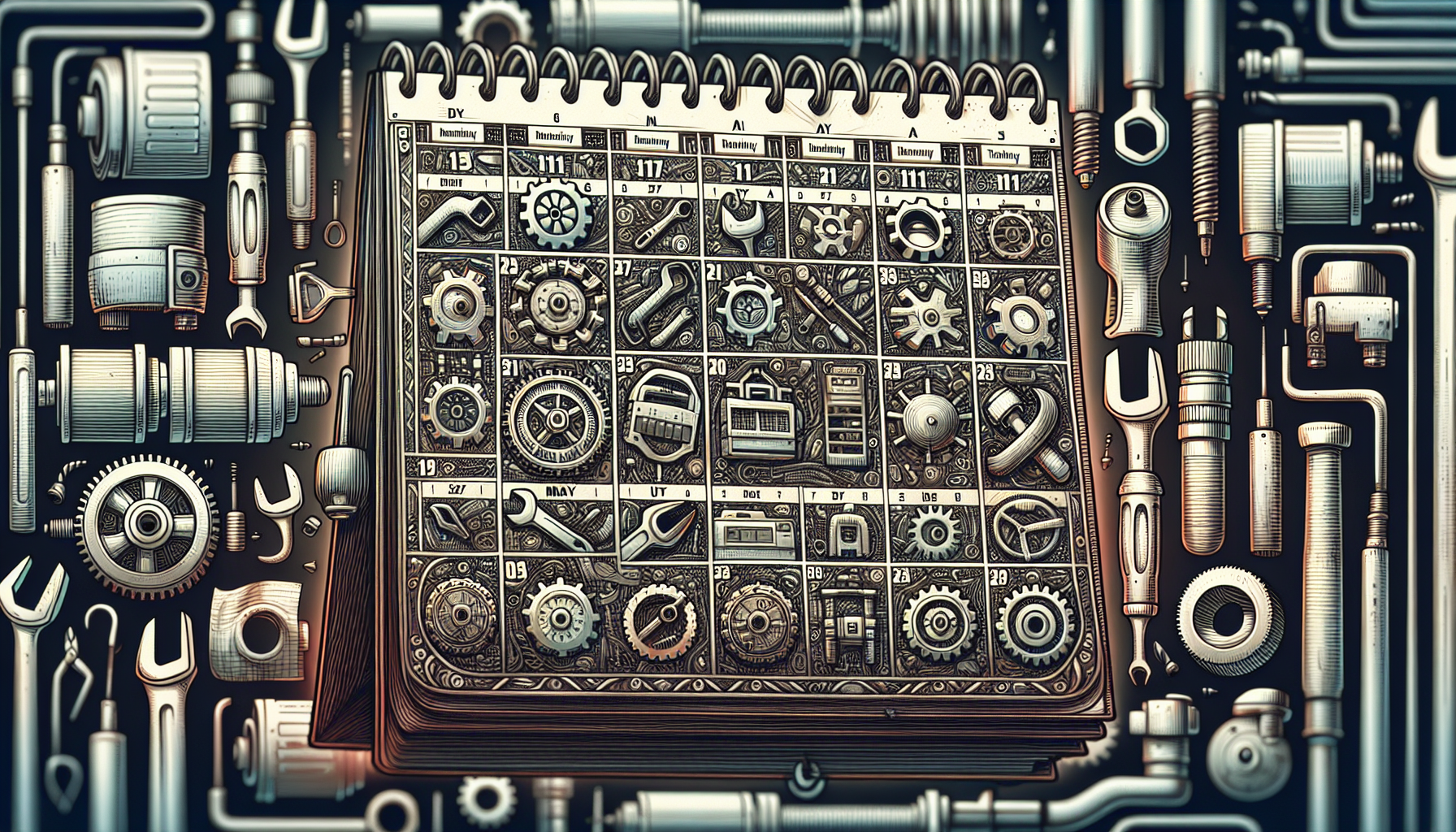
The cornerstone of a robust manufacturing process is preventative maintenance, a proactive strategy that keeps industry cogs turning smoothly. A focus on regular maintenance allows for anticipation and avoidance of various issues that result in equipment failure, especially in heavy manufacturing equipment. This extends the machinery’s life and ensures that it operates at its peak condition, averting unforeseen machine malfunctions.
Inspections and monitoring by trained operators play a significant role in this process, allowing for early detection and management of potential problems before they escalate into crises. A well-executed preventive maintenance program can significantly reduce maintenance costs and downtime, thereby safeguarding worker safety and productivity.
Developing a Maintenance Schedule
A well-crafted maintenance schedule in the manufacturing industry involves:
- Evaluating each piece of equipment to understand its unique demands
- Establishing a calendar of routine checks, preventive measures, and repairs
- Regular refinement based on performance data and operational needs
This schedule needs to be flexible to ensure longevity.
Resource allocation for the necessary tools and parts must also be factored into this plan, ensuring that critical equipment receives the attention it needs to avoid breakdowns and maintain production goals.
Regular Inspections and Monitoring
Regular inspections and monitoring serve as watchful protectors against equipment failures. These routine checks are crucial in maintaining machines proactively, catching those minor complications before they balloon into significant issues. The calculated frequency of these inspections should be based on a thorough risk assessment, considering factors like environmental conditions, manufacturer recommendations, and past inspection experiences.
Integrating continuous monitoring through sensor data can establish an operational baseline, enabling the early detection of anomalies and predicting potential breakdowns.
2. Enhancing Operator Training and Support
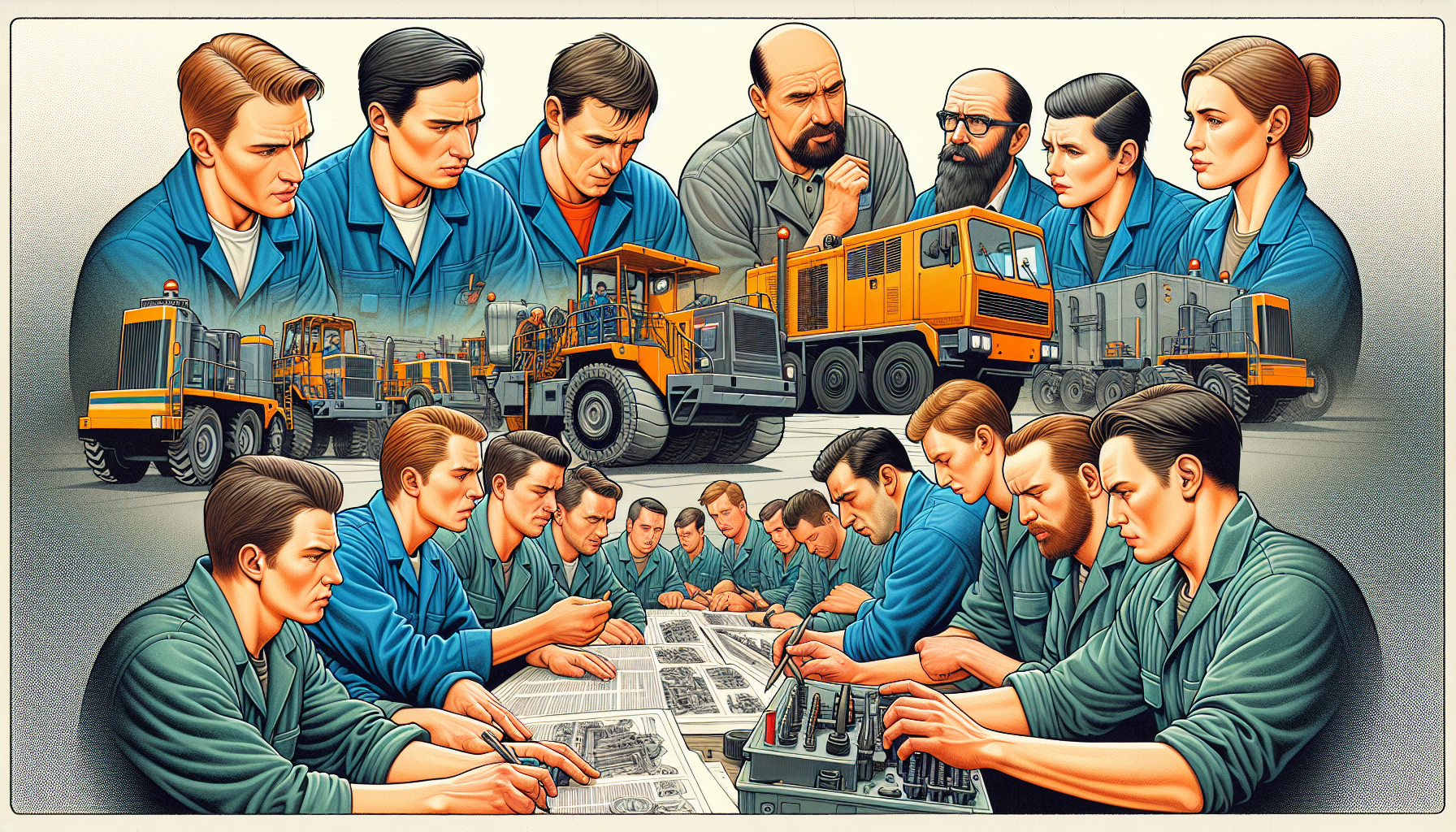
The operator, central to every machine, plays a crucial role in preventing expensive breakdowns with their skills and understanding. Properly trained machine operators, also known as equipment operators, are not just cogs in the machine but are key to ensuring smooth and safe operation. Comprehensive training programs elevate operator safety, maintain product quality, and guarantee uninterrupted machine operation.
Additionally, operators with adequate training are more likely to follow safety protocols and regulatory standards, thus avoiding legal issues and guaranteeing customer satisfaction.
Comprehensive Training Programs
A well-informed and competent workforce is often the result of comprehensive training programs. Operators must be thoroughly educated on the safe operation of machinery and the risks involved, ensuring compliance with all safety regulations. Training sessions should encompass operating procedures, basic troubleshooting, and best practices for safe equipment use.
Maintenance teams, too, should be kept abreast of new technologies and best practices to maintain and repair equipment effectively. Engaging maintenance staff through education programs is essential in cultivating a culture of reliability and excellence.
Ongoing Support and Resources
The manufacturing landscape is ever-changing, and so is the technology that drives it. Therefore, ongoing support and resources are critical for operators to stay on top of these changes and effectively manage the equipment. Continuous training empowers operators to:
- Adapt to new tasks
- Handle changing equipment
- Foster a versatile and dynamic workforce
- Confidently handle the demands of the manufacturing process
3. Utilising Technology for Improved Machine Performance

The introduction of technology into manufacturing has brought about a revolution. Embracing technological advancements like thyristor power controllers can greatly enhance machine performance, offering precise power control and reducing the risk of breakdowns. These innovations not only boost efficiency and productivity but also provide invaluable data that can be used to track and improve the manufacturing process.
Cloud-based inspection software streamlines the maintenance routine, enabling the creation of custom checklists and instant data upload from the field.
Power Control Solutions
Power control solutions are the unsung heroes in the battle against machine breakdown. These systems play a pivotal role in maintaining smooth operations by ensuring a stable power supply and mitigating risks associated with power surges and fluctuations. With their rapid response times, Thyristor power controllers provide real-time adjustments to power levels, maintaining stability and preventing damaging fluctuations.
Features like heater break alarms and soft start functionalities address issues of overheating and power surges, significantly reducing the risk of machine malfunctions.
Extending Component Lifespan
The lifespan of machinery components is a critical factor in manufacturing equipment’s overall reliability and efficiency. Thyristor controllers play a significant role in this aspect by providing consistent and stable power, minimising the risks of voltage surges and power spikes that can lead to premature equipment failure.
Furthermore, advanced power units like thyristors have the following features:
- Self-regulation and shutdown mechanisms that activate during high temperatures to prevent overheating
- Safeguarding critical components
- Extending their operational life
4. Implement Safety Measures
Enforce strict safety protocols to prevent accidents and damage to machinery, including proper lockout/tagout procedures and personal protective equipment (PPE).
These safety protocols are crucial for creating a secure environment for both the workforce and the machinery they operate. Lockout/tagout procedures ensure that machines are properly shut off and not started up again before the completion of maintenance or repair work, thereby safeguarding against accidental start-ups that could lead to injuries or equipment damage. The use of PPE, such as safety goggles, helmets, gloves, and ear protection, is equally important in protecting workers from potential hazards associated with machine operation and maintenance.
By strictly adhering to these safety measures, workplace accidents and machine wear and tear risks can be significantly reduced, contributing to a safer and more efficient production process.
5. Replace Worn Parts
Regularly inspect and replace worn or damaged components such as belts, bearings, and seals to prevent them from causing larger breakdowns. This routine examination is not just a cursory glance but a critical dive into the heart of your machinery.
By identifying parts that are on the brink of failure, you can pre-emptively address issues that could escalate into costly and time-consuming repairs. This proactive approach to maintenance is akin to a regular health check-up for your machines, ensuring they are in top condition and can continue to operate without interruption. It’s about staying one step ahead of wear and tear, ensuring that each component is in its best shape to support your manufacturing equipment’s overall functionality and efficiency.
6. Keep Work Areas Clean
Maintain a clean and organised work environment to reduce the risk of debris or contaminants causing damage to machinery. A tidy workspace is not only conducive to better concentration and efficiency among staff but also minimises the chances of foreign objects interfering with mechanical components.
Regular cleaning schedules, proper storage solutions, and clear labelling can dramatically decrease the likelihood of operational disruptions due to environmental factors.
7. Proactive vs Reactive Maintenance
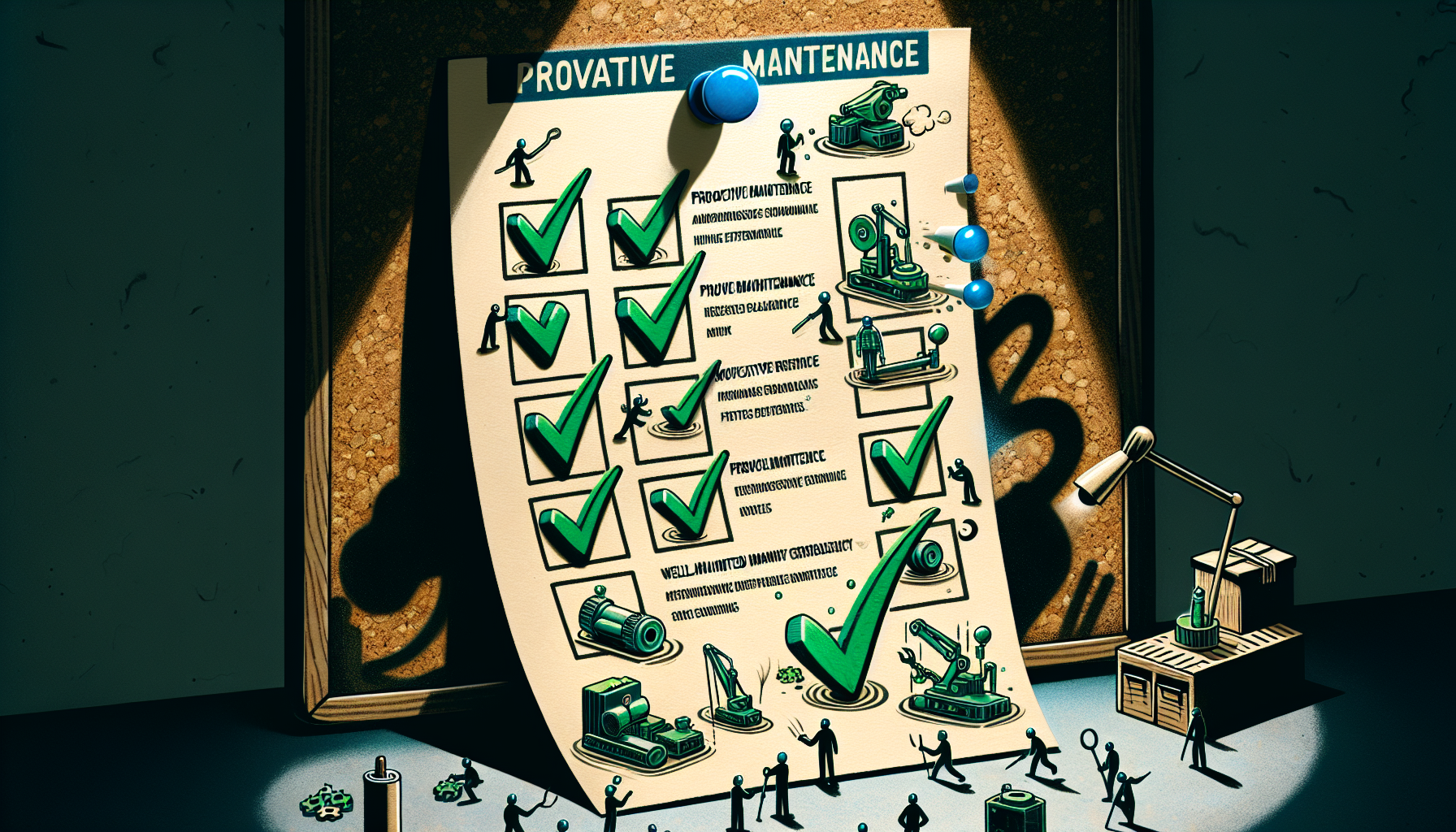
In the realm of maintenance management, the age-old debate of proactive versus reactive approaches continues to rage. Proactive maintenance, which aims to prevent issues from causing equipment failures, holds a clear advantage. This strategic approach reduces machine downtime, improves production, and minimises maintenance costs.
By catching minor issues before they become major problems, proactive maintenance avoids unplanned downtime and the higher repair costs associated with reactive measures.
Identifying and Addressing Potential Issues
Routine maintenance checklists are vital tools for proactive maintenance. They enable the early detection and resolution of potential issues, preventing costly equipment malfunctions and lost production time. Addressing these potential issues proactively is a key strategy for avoiding machine breakdowns, which can lead to reduced delays and repair expenses.
Seeking feedback from maintenance teams provides valuable insights that help refine maintenance processes and overcome execution challenges.
Building a Reliability Culture
Creating a culture of reliability within an organisation is a transformative process that involves shifting from a reactive to a proactive maintenance mindset. It’s about encouraging the participation of every individual in the maintenance process, from:
- submitting requests
- verifying work orders
- ensuring that each person is well-informed and on the same page about the importance of preventative maintenance.
8. Establishing an Inspection Checklist
A carefully crafted, comprehensive inspection checklist serves as the primary defence against unplanned downtime by tracking all instances of machine breakdowns. With the right tools and software, the creation and monitoring of such checklists become seamless, significantly reducing the unplanned downtime that can plague manufacturing processes.
Customising Your Checklist
As each machine is unique, the checklist used for its maintenance should be tailored accordingly. Customising your checklist to align with the specific equipment and operational needs ensures a maintenance plan that is as precise as it is effective. A truly comprehensive checklist is informed by a thorough risk assessment and includes all critical parts of the equipment, prioritising issues based on immediacy and maintenance schedules.
Regularly Updating the Checklist
The manufacturing world is not static, and neither should be the checklists that ensure its smooth operation. Regular updates to the checklist guarantee that maintenance tasks remain relevant to the current operational state of the machinery. These updates are also crucial for staying compliant with ever-changing industry regulations and standards.
9. Adhering to Manufacturer’s Guidelines
Strict adherence to the manufacturer’s guidelines is a crucial aspect of machine maintenance. By following these instructions, technicians can ensure correct machine calibration, effective troubleshooting, and proper execution of maintenance procedures, all of which contribute to reducing the risk of breakdowns.
Importance of Manuals
Equipment manuals, often underestimated, are rich sources of information and crucial for maintaining machinery in optimal condition. These manuals provide essential:
- Calibration guidelines
- Checklists
- Troubleshooting tips
- Maintenance procedures
Technicians must adhere to these guidelines for accurate operation.
It’s imperative to educate technicians on the importance and correct usage of these manuals to ensure they are following the manufacturer’s instructions to the letter.
Ensuring Compliance
Following the manufacturer’s instructions is not just a best practice but also a legal requirement. Ignoring these guidelines can lead to serious legal consequences, including personal injury claims and violations of health & safety regulations.
Regular, comprehensive risk assessments are essential for enforcing adherence to these guidelines, ensuring a safe working environment, and avoiding potential criminal charges. Training sessions play a crucial role in keeping all staff members updated on equipment operations, upgrades, or modifications, which is vital for maintaining compliance.
10. Establish A Contingency Plan
Develop a contingency plan to quickly address unexpected breakdowns, including access to spare parts, backup equipment, and emergency repair services. This plan should detail the procedures for rapid response to equipment failure, ensuring minimal downtime.
It must outline the communication protocols for escalating issues, designating responsibility to team members, and engaging with repair technicians.
Additionally, the plan should include a comprehensive list of essential spare parts for critical equipment, a network of reliable suppliers for expedited delivery, and protocols for the use of backup equipment when primary machinery fails. Regular drills and training sessions on emergency procedures will ensure that all relevant personnel are prepared to act swiftly and effectively in the event of a breakdown.
Summary
To summarise, preventing machine breakdowns in manufacturing is not merely about fixing what’s broken; it’s about creating an ecosystem where breakdowns are rare occurrences. By understanding the causes and costs of machine failures, implementing a preventative maintenance strategy, enhancing operator training and support, utilising technology smartly, and fostering a proactive maintenance culture, manufacturers can significantly reduce the likelihood of breakdowns.
Adhering to manufacturer guidelines and maintaining an up-to-date inspection checklist are also non-negotiable tenets of this approach. Let this be a call to action for all industry professionals to embrace these practices and move towards a future where machine reliability is standard, not the exception.
For more information on how to prevent machine breakdown, as well as improving your machine efficiency, get in touch with our team here at CD Automation by calling 01323 811 100 or requesting an online quote today.
Frequently Asked Questions
What is the main reason for machine breakdown?
The main reason for machine breakdown is lack of maintenance. Regular maintenance is crucial for the proper functioning of industrial machines.
How do you handle a machine breakdown?
To handle a machine breakdown, follow these steps: Verify there is a problem, identify the root cause, correct the cause, verify the problem is resolved, and prevent future issues. Always follow up to ensure smooth operations.
How would you ensure that you reduce the rate of mechanical breakdown of a machine?
To reduce the rate of mechanical breakdown of a machine, implement regular preventive maintenance procedures such as routine inspections, cleaning, and servicing to identify and address potential issues proactively. This will help mitigate the risk of equipment breakdowns and associated costs.
What is the primary focus of thyristor power controllers?
The primary focus of thyristor power controllers is to minimise the chances of machine breakdowns and facilitate trouble-free running, ultimately ensuring smooth operations and reducing maintenance costs.
What are the advantages of using solid-state relays (SSRs) or Thyristor Power Controllers?
Using solid state relays (SSRs) or Thyristor Power Controllers can provide more reliability for long-term operation, as they lack moving parts and require less frequent replacement, reducing the risk of breakdowns.


